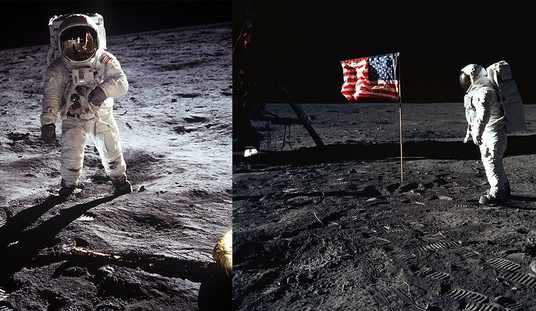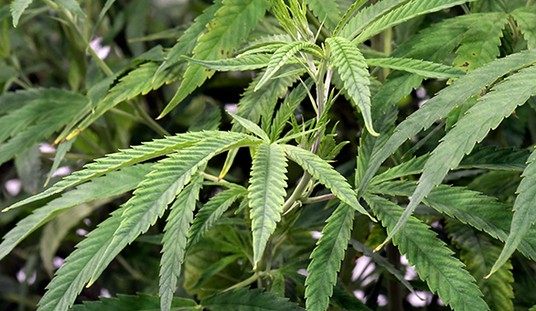Living in Alaska gives one a pretty good sense of how huge the natural world is, compared to the human world. We're reminded of it every time we go to the post office, and there on the northern horizon is Mt. McKinley/Denali (I generally just call it "the Big Guy"). That giant mountain dominates our northern horizon, and it's 150 miles away. Alaska is, as I'm always saying, vast, wild, clean, and free, and it gives you a sense of scale you just won't find in, say, New Jersey.
But then, you'll get the same kind of sense of scale when, say, standing on a beach and contemplating what Robert Heinlein called "the ungrokkable vastness of ocean," or when hiking in the Colorado Rockies, driving across the Great Plains, or any number of other grand, open vistas the earth has to offer. Earth is really, really big, and in comparison, we're pretty small.
So, in the event of one of nature's real catastrophes, we may be pretty screwed. Like, say, a supervolcano.
Supervolcanoes are in a class of their own. Unlike typical eruptions, these blasts eject more than 1,000 cubic kilometers of material. That’s enough to bury entire cities under layers of ash. They don’t look like the volcanoes you might picture either. Instead of peaks, they often form as massive calderas—huge sunken areas created when the magma chamber empties and collapses.
Their eruptions sit at the top of the Volcanic Explosivity Index, labeled VEI-8. That’s the highest score possible. To compare, the famous eruption that buried Pompeii was a VEI-5—far less powerful. A single VEI-8 event would not just devastate the surrounding region. It could alter weather patterns, block sunlight, and disrupt global agriculture.
In other words, a real game-changer. But can we do anything about them? Some vulcanologists have proposed a few things, and while my background is in biology, not geology - vulcanology being a subset of geology - you can nevertheless color me skeptical. Here's one proposal:
One of the most discussed approaches is reducing the heat in a supervolcano’s magma chamber. This concept is particularly relevant to Yellowstone, where researchers from NASA’s Jet Propulsion Laboratory proposed a plan to use water to cool the magma and lower the risk of eruption.
The proposal involves drilling deep into the supervolcano’s crust and injecting water, which would circulate, absorb heat, and return to the surface as steam. This geothermal system could slowly cool the magma chamber over tens of thousands of years, potentially delaying or even preventing an eruption.
I have some questions.
First: How much water would this take? The Yellowstone caldera is pretty big. It measures roughly 34 by 44 miles, and in its last eruption, about 640,000 years ago, spat out 620 cubic miles of ejecta - ash, gas, and magma. Where would we get enough water to attenuate that?
Second: How would we get it close enough to the magma chamber to make a difference? How many wells would we have to drill?
Third: What other effects might we have, messing about with this? I'm inclined to say little or none, as our efforts, I'm afraid, would be too small to matter.
That doesn't mean that monitoring these beasts isn't worth doing. But our expectations should be tempered by reality, and by that sense of scale I mentioned.
See Also: Cascadia Subduction Zone: A Ticking (Earthquake) Time Bomb on West Coast
'Chaos Would Reign': The Alaska Volcano That Could Shut Down the Northern Hemisphere
The silver lining in these phenomena is that when they aren't engaged in planet-altering eruptions, they represent a possible source of geothermal energy.
There are other mitigation measures mentioned, like tapping the magma chambers in an attempt to relieve pressure, to which I would reply, release it to where? It seems to me this would release a vast amount of toxic volcanic gases. Gases that, I would point out to the climate scolds, are significant greenhouse gases, far more so than carbon dioxide.
Simply put, if one of these monsters ever decides to go full-bore into an explosive eruption, humanity is, well, pretty screwed. The after-effects of one of the real crowd-pleasers would last decades. Food chains would collapse. Nature would, in effect, hit a great big "RESET" button.
That doesn't mean watching and evaluating these supervolcanoes is a waste of time. These are features we would do well to keep an eye on. If there are ever any signs of a pending eruption, knowing about it in advance may at least allow us to do what we can to move people out of the immediate area. But we should harbor no illusions about these things; they are vast beyond our capacity to easily understand, and we've been fortunate so far to live in an epoch when they've been quiet.
Let's hope it stays that way.














